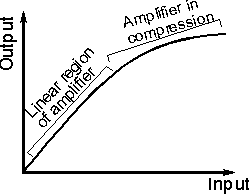Products Category
- FM Transmitter
- 0-50w 50w-1000w 2kw-10kw 10kw+
- TV Transmitter
- 0-50w 50-1kw 2kw-10kw
- FM Antenna
- TV Antenna
- Antenna Accessory
- Cable Connector Power Splitter Dummy Load
- RF Transistor
- Power Supply
- Audio Equipments
- DTV Front End Equipment
- Link System
- STL system Microwave Link system
- FM Radio
- Power Meter
- Other Products
- Special for Coronavirus
Products Tags
Fmuser Sites
- es.fmuser.net
- it.fmuser.net
- fr.fmuser.net
- de.fmuser.net
- af.fmuser.net ->Afrikaans
- sq.fmuser.net ->Albanian
- ar.fmuser.net ->Arabic
- hy.fmuser.net ->Armenian
- az.fmuser.net ->Azerbaijani
- eu.fmuser.net ->Basque
- be.fmuser.net ->Belarusian
- bg.fmuser.net ->Bulgarian
- ca.fmuser.net ->Catalan
- zh-CN.fmuser.net ->Chinese (Simplified)
- zh-TW.fmuser.net ->Chinese (Traditional)
- hr.fmuser.net ->Croatian
- cs.fmuser.net ->Czech
- da.fmuser.net ->Danish
- nl.fmuser.net ->Dutch
- et.fmuser.net ->Estonian
- tl.fmuser.net ->Filipino
- fi.fmuser.net ->Finnish
- fr.fmuser.net ->French
- gl.fmuser.net ->Galician
- ka.fmuser.net ->Georgian
- de.fmuser.net ->German
- el.fmuser.net ->Greek
- ht.fmuser.net ->Haitian Creole
- iw.fmuser.net ->Hebrew
- hi.fmuser.net ->Hindi
- hu.fmuser.net ->Hungarian
- is.fmuser.net ->Icelandic
- id.fmuser.net ->Indonesian
- ga.fmuser.net ->Irish
- it.fmuser.net ->Italian
- ja.fmuser.net ->Japanese
- ko.fmuser.net ->Korean
- lv.fmuser.net ->Latvian
- lt.fmuser.net ->Lithuanian
- mk.fmuser.net ->Macedonian
- ms.fmuser.net ->Malay
- mt.fmuser.net ->Maltese
- no.fmuser.net ->Norwegian
- fa.fmuser.net ->Persian
- pl.fmuser.net ->Polish
- pt.fmuser.net ->Portuguese
- ro.fmuser.net ->Romanian
- ru.fmuser.net ->Russian
- sr.fmuser.net ->Serbian
- sk.fmuser.net ->Slovak
- sl.fmuser.net ->Slovenian
- es.fmuser.net ->Spanish
- sw.fmuser.net ->Swahili
- sv.fmuser.net ->Swedish
- th.fmuser.net ->Thai
- tr.fmuser.net ->Turkish
- uk.fmuser.net ->Ukrainian
- ur.fmuser.net ->Urdu
- vi.fmuser.net ->Vietnamese
- cy.fmuser.net ->Welsh
- yi.fmuser.net ->Yiddish
Receiver Overload Performance
Receiver overload and strong signal handling performance is often just as important as sensitivity and many other parameters.
With many radios operating in close proximity to other radios with transmitters, it is just as important for the radios to work effectively with strong signals just off channel as it is to be able to receive low levels signals.
With the proliferation of cellphones, Bluetooth devices, Wi-Fi, NFC, as well as more traditional radio systems, it is necessary for all of these to work in the presence of the others which may be in close proximity and radiating signals on adjacent channels or nearby frequencies. Accordingly the receiver overload and strong signal handling capability is very important.
Overload performance
There are several parameters and specifications that are associated with defining the overload or strong signal handling performance of a radio receiver:
Receiver blocking: Receiver blocking occurs when a strong signal close to that being received reduces the sensitivity of the receiver. It is very important, especially in these days where there are many short range, and other longer range wireless cellular and other radio communications devices around.
Intermodulation performance: Intermodulation distortion and intermodulation performance are important parameters for a receiver performance. The presence of intermodulation products gives rise to unwanted signals which may mask the wanted signal.
Cross modulation : As the name implies, cross modulation manifests itself by transferring the modulation on one very strong signal onto other signals being received.
RF amplifier & receiver overload
One of the key elements of any receiver that governs its overload or strong signal handling capability is the RF amplifier. Its performance is key to the performance of the whole receiver.
Under normal conditions the RF amplifier of a radio receiver should remain linear with the output remaining proportional to the input. Even the best RF amplifiers have limits to their output capability, and beyond this they start to overload. When this happens their output starts to limit and the output is less than expected. At this point the amplifier is said to be in compression.

The characteristic curve for an amplifier
Compression in itself is not a problem for receiver overload performance. The absolute values of a signal are of little value and in any case the automatic gain control (AGC) used in many radio receivers means that the gain is reduced when strong signals are being received.
It is the side effects of compression give rise to major problems. Effects like intermodulation distortion, cross modulation, blocking and others mean that the operation of the radio receiver can be seriously impaired. It is these aspects which are of great importance in the radio receiver design.
RF mixer & receiver overload
Another element of the receiver that has a major bearing on the strong signal handling performance is the first mixer. The performance of the mixer has a major effect on the receiver overload and strong signal handling performance.
Improving receiver overload performance
To improve the receiver overload and strong signal handling performance prevent these problems occurring at reasonable signal levels, radio receivers have a number of methods of reducing the signals levels:
High level RF amplifier : To ensure the optimum receiver overload performance, the first RF amplifier should be able to cater for high level signals while still remaining linear. It should have a high third order intercept point.
High level mixer: Likewise to ensure the mixer does not become overloaded by any strong signals that may be encountered, it should have as high a third order intercept as possible commensurate with other factors. For the best performance it should have a high level local oscillator input level.
AGC automatic gain control: Many receivers have a scheme known as an automatic gain control built in. This takes a sample of the output signal level and reduces the gain of the early stages. This works well for most situations, but it may not be able to prevent the earliest stages of the receiver from overloading. This is particularly true when signals are off the received channel, because these signals will not affect the AGC, but will still be presented to first stages of the receiver before they are filtered out.
While these measures may improve the performance, any radio receiver design will be a compromise of various parameters, and therefore the very best performance may not be achievable in all instances.





